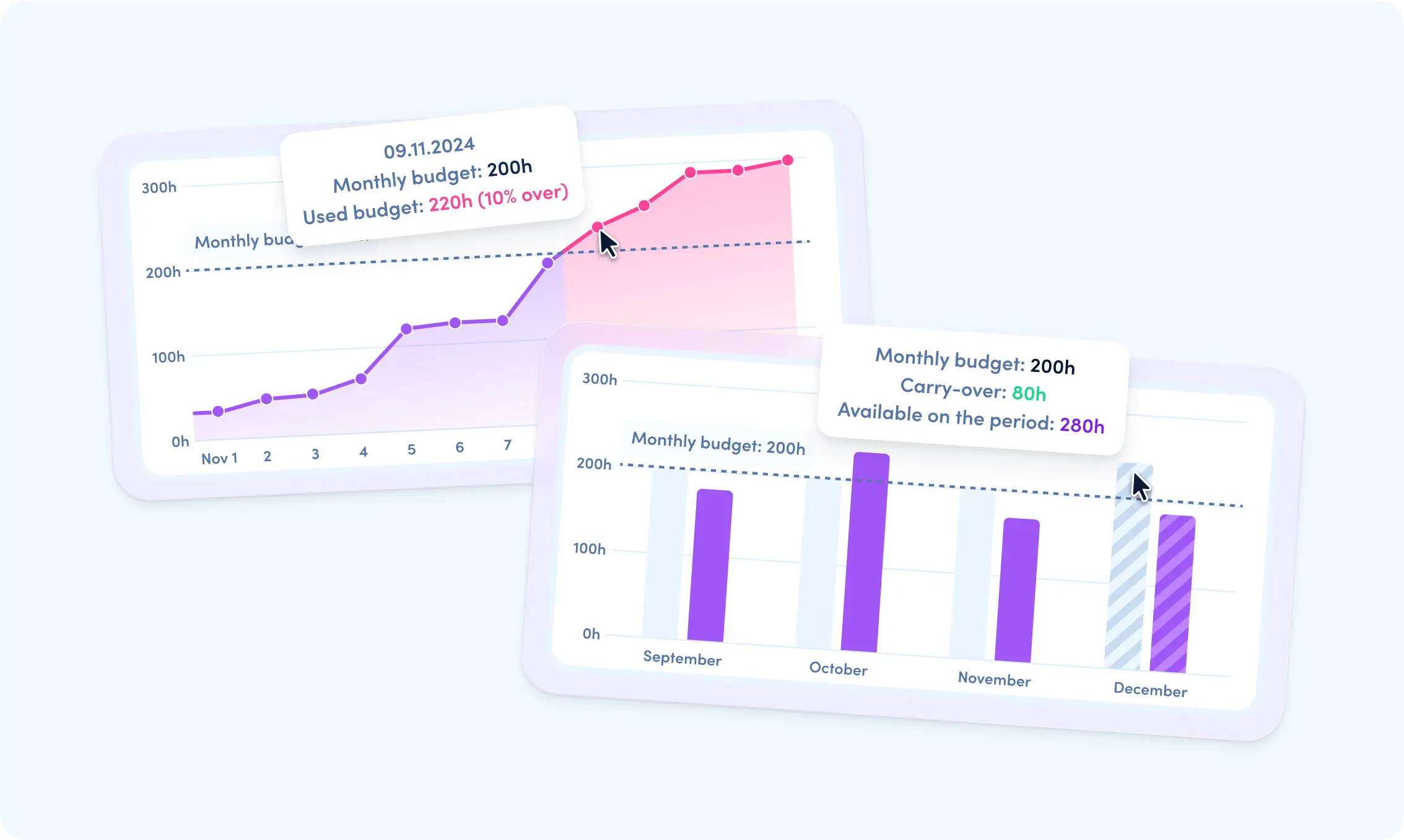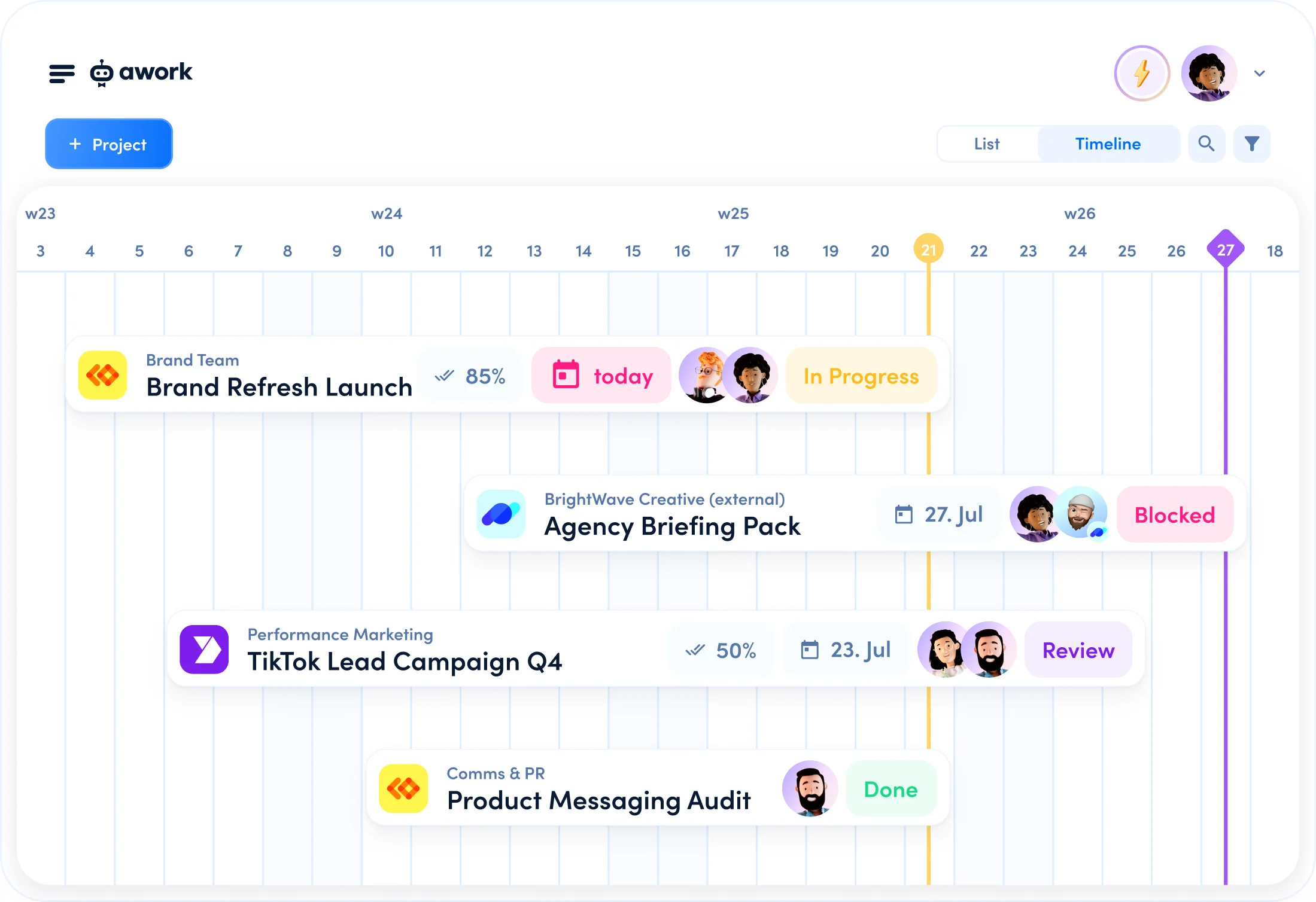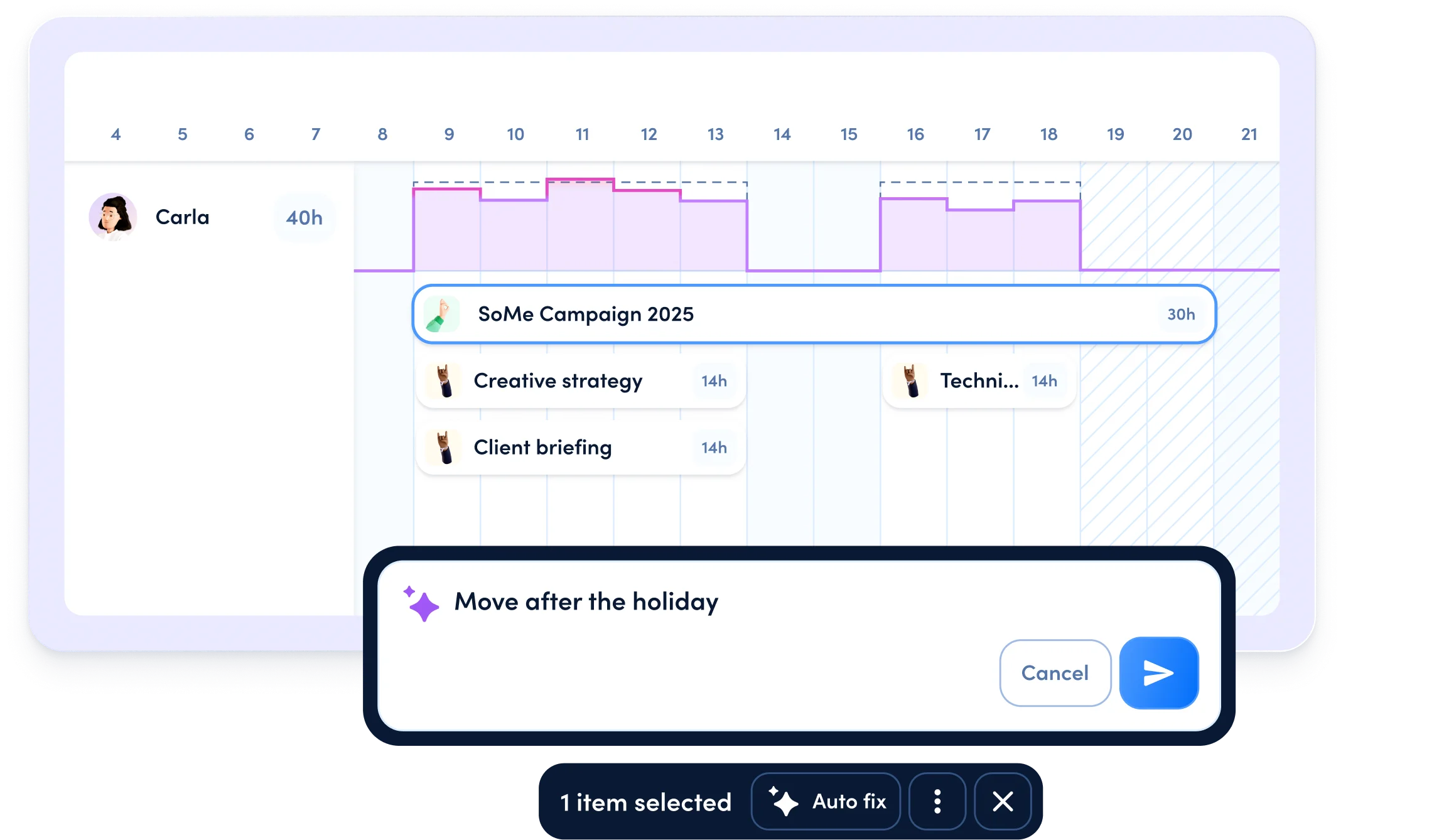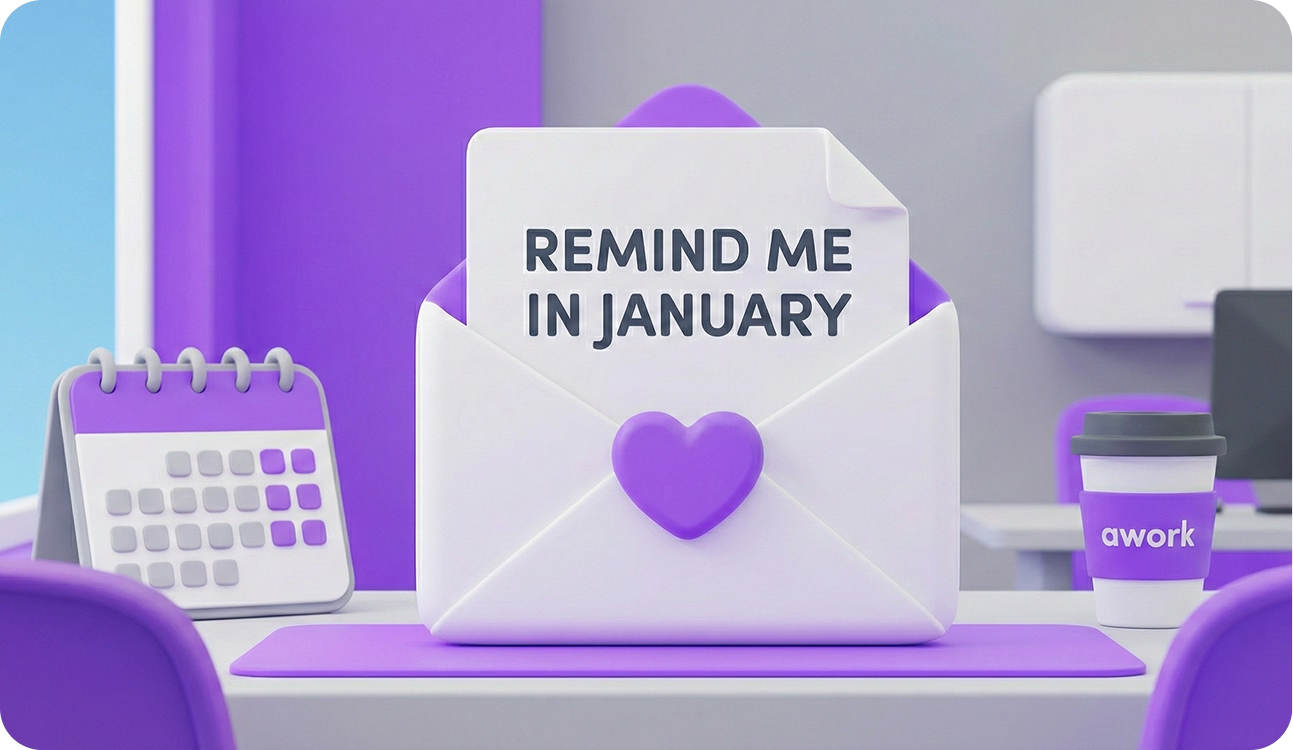




Capacity utilisation is the most direct lever for revenue stability. If you know how many projects you can handle – and how many you need, you can manage your sales in a targeted manner.
If you plan capacity utilisation, you can also plan revenue – instead of just hoping for the best.
Lack of capacity utilisation often leads to poorly calculated projects. Only when you know how much capacity is tied up where can you set realistic prices and deadlines and avoid overtime or overdelivery.
Making capacity utilisation visible means securing profits.
Agencies without clear capacity planning spend too much time in reaction mode. On the other hand, those who manage their resources strategically create space for further development, positioning and business building.
Good capacity utilisation is the basis for real future work.
Too much or too little work frustrates your team. A balanced, transparent workload ensures fairness, focus and motivation and reduces the risk of overload and turnover.
Productive workload strengthens team loyalty and performance.









.webp)




































Underutilisation is not only evident in an empty calendar view. It is often more subtle: projects are brought in at short notice, employees spend a lot of time on internal tasks, or there is downtime between projects. Another clear sign is when spontaneous sales campaigns are necessary to fill gaps.
👉 Systematic monitoring of capacity vs. utilisation (e.g. through project roadmaps or forecasts) helps to identify this situation at an early stage.
Utilisation is best measured using a combination of quantitative and qualitative KPIs:
In addition, you should regularly analyse how much capacity is tied up in meetings, internal tasks or queries – i.e. time that does not directly contribute to value creation.
Not necessarily. The first step is to create clarity about processes, project status and capacities – regardless of the tool. Many agencies first improve their capacity utilisation through better communication, forecasting and standardised processes.
Tools such as project management, CRM or capacity planning systems help to scale this transparency – but they are not an end in themselves.
👉 Recommendation: Make conscious use of existing tools and optimise them before introducing new ones.
A visual project overview shows you at a glance:
This is essential for setting priorities, planning capacities realistically and being able to make reliable commitments to sales or management.
A good roadmap combines project planning with capacity planningm instead of just managing deadlines.
In the short term, you can already achieve visible effects with clear prioritisation, better task distribution and clear project planning – often within a few weeks.
For sustainable improvements (e.g. through process standardisation, sales structure or retainer business), you should think in the medium to long term – here you usually need 2–4 months to see the first stable results.
Important: Small optimisations often have a big leverage effect – if they are implemented consistently.
Yes – awork was developed specifically for creative teams and agencies. It helps you plan multiple simultaneous projects clearly, assign tasks efficiently, and coordinate everyone – internal and external – smoothly. Whether you’re a project manager, team lead or freelancer – with awork, everyone knows what needs to be done.

I've been a project manager for over 14 years, and it feels like I've been searching for a proper digital solution for just as long. We now found that solution with awork.

The efficient workflows and project-related communications facilitated by awork are undoubtedly the best.

My team is truly excited about awork. We've tested other tools and were not as happy, but now we’ve found genuine relief and support for everyone.

We chose awork because it offers a wealth of features, outshining all the free project management tools while remaining highly flexible. Additionally, it was important to us that our tool of choice receives regular updates.

awork is incredibly intuitive to use. Everyone gets the hang of it right away and enjoys working with it.

Just had a chat with @awork’s support. That’s what I call customer-oriented work – very, very good. And the tool is just as capable!


Try it for free – no credit card required.
We get it – December's chaos. Drop your email and we'll remind you to try awork in January and get your team's projects under control. For an organised start to 2025.


